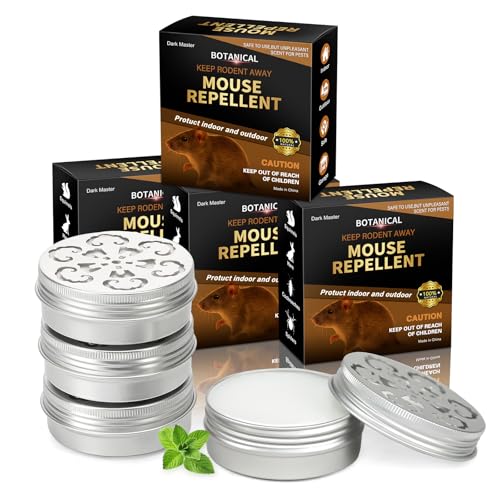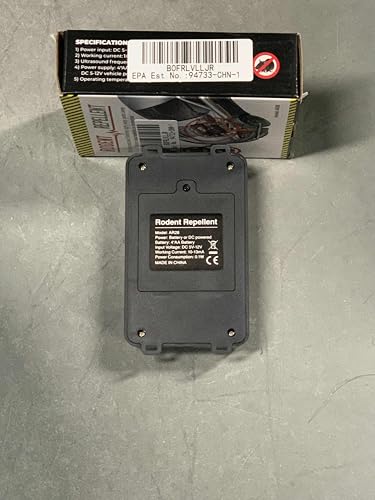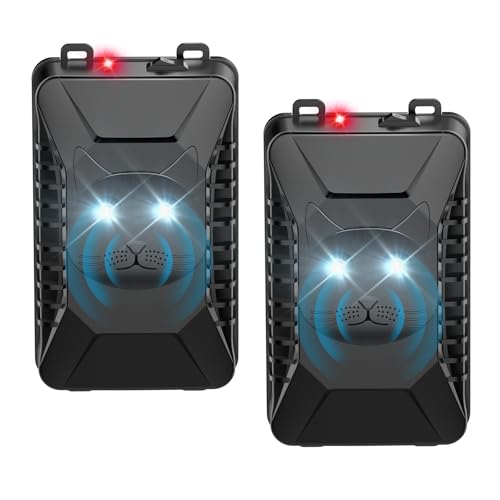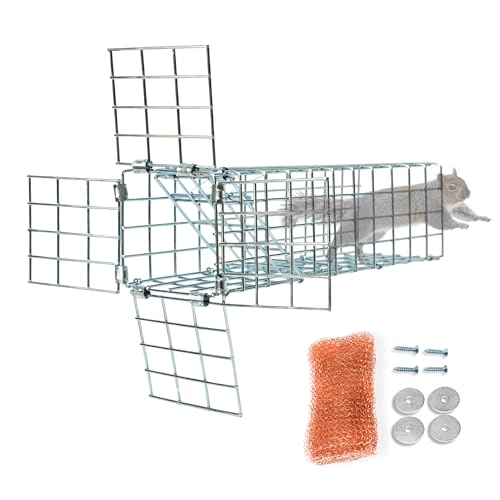Discovering that a tiny, unwelcome guest has turned your car into its new home can be incredibly unsettling. You’re not just dealing with a nuisance; you’re facing potential health risks and costly damage to your vehicle’s essential systems. Chewed wires, foul odors, and shredded upholstery are more than just an inconvenience—they’re clear signs of a problem that needs immediate attention.
To get mice out of your car, first confirm the infestation by looking for droppings and nests, then use repellents like peppermint oil and set baited traps. After removal, thoroughly disinfect the area with a bleach solution and implement long-term prevention by keeping the car clean.
Leveraging extensive analysis of available data and established pest control patterns, this guide unpacks a proven, step-by-step approach to reclaim your vehicle. We’ll walk you through everything from confirming the signs and executing fast removal to performing a critical, safe cleanup and ensuring these pests don’t come back.
Key Facts
- Significant Damage Potential: A single mouse can cause thousands of dollars in damage in just a few days by chewing through critical electrical wires in the engine compartment.
- Serious Health Risks: Rodent droppings and urine can carry pathogens that cause diseases like hantavirus, which can become airborne if not cleaned properly. Information from sources like King County public health emphasizes the need for careful disinfection.
- Comprehensive Insurance May Help: Many comprehensive auto insurance policies cover animal-related damage, including problems caused by mice. It’s always recommended to check with your insurance agent to confirm your specific coverage.
- Scent-Based Deterrents Are Effective: Numerous studies and reports indicate that strong scents, particularly peppermint oil, are highly effective at deterring mice, who find the smell overwhelming.
- Regular Use is a Deterrent: A frequently used vehicle is less attractive to rodents seeking a stable, quiet place to nest. Driving your car regularly is one of the simplest prevention methods.
Step 1: First, Confirm You Have a Mouse Infestation (Key Signs)
Look for small, dark droppings on carpets and seats, chewed wires in the engine bay, holes in upholstery, shredded nesting materials in the air filter box, and foul, musky odors. Noticed a strange, musky smell from your vents? It might be more than just old air. Before you can effectively figure out how to get mice out of your car, you need to be 100% certain they’re your uninvited passengers. Here are the definitive signs to look for:
- Chewed Wires: This is the most dangerous sign. Mice gnaw on the soy-based insulation of modern car wiring, which can lead to your car not starting, flickering lights, or other serious electrical failures. The implication is clear: this isn’t just a pest problem; it’s a major safety and financial liability.
- Mouse Droppings: Finding small, dark, pellet-like droppings on your car’s carpets, seats, dashboard, or inside the glove box is the most common and certain indicator of an infestation.
- Damaged Upholstery and Insulation: Rodents will tear up soft materials to build their nests. Check for unexplained holes in your seats, shredded foam, or missing chunks of insulation from under the hood or dashboard.
- Foul, Musky Odors: A persistent, unpleasant smell, often described as musty or like urine, is a strong signal. This odor can come from feces and urine or, in worse cases, a mouse that has died inside a vent or hidden compartment.
- Nesting Materials: Mice build nests in warm, sheltered locations. Pop the hood and check your engine’s air filter box, under the plastic engine cover, and in the corners of the engine bay. Inside the car, common spots include the glove compartment, trunk, and underneath the seats.
Chewed Wires & Car Malfunctions
Pro Tip: “Always perform a quick visual check under the hood if your car has been sitting for a while, especially if you live near fields or wooded areas.”
Mice chewing through electrical wires in the engine compartment can cause the car to not start or lead to serious electrical system failures. This is the most critical issue to watch for. If you notice your car behaving erratically—the check engine light comes on, the radio flickers, or it fails to start altogether—you must inspect the engine compartment immediately. Damage to electrical wires is not just an inconvenience; it can lead to expensive repairs and create a fire hazard.
Droppings, Nests, and Foul Odors
Check for small, dark droppings on floors, shredded paper or foam nests in the air filter box or glove compartment, and a persistent musky odor from the vents. Finding a mouse nest is like discovering an unauthorized tenant has been renovating your car’s interior with its own parts. These physical signs are undeniable proof of an active infestation.
Here’s a quick guide to what you’re looking for and where:
| Sign | What It Looks Like | Common Locations |
|---|---|---|
| Mouse Droppings | Small (1/8-1/4 inch), dark, pointed pellets, similar to rice grains. | On floor mats, seats, dashboard, in the trunk, and on top of the engine. |
| Mouse Nest | A ball or bundle of shredded, soft materials. | Inside the engine air filter box, under plastic engine covers, behind the glove box, under seats, in the trunk. |
| Foul Odor | A strong, musky, ammonia-like smell from urine and feces. | Strongest when turning on the heat or A/C, as it blows air over hidden nests or waste in the vent system. |
Step 2: How To Get Mice Out of Your Car Fast (Immediate Removal Methods)
To get mice out fast, make the car inhospitable by blasting the heat and honking the horn, use strong-smelling repellents like peppermint oil, and set baited mousetraps in areas of activity. Once you’ve confirmed the problem, it’s time for action. The goal is to make your car the last place any mouse would want to be.
Quick Fact: “Mice dislike disruption. Sometimes, simply making your car an unpleasant place to be is enough to convince them to leave on their own.”
You have several effective options, ranging from simple scare tactics to more definitive removal solutions.
Method 1: Make the Environment Hostile
Park the car in the sun, blast the heater, honk the horn repeatedly, and leave the hood open in a garage to make the environment uncomfortable and drive mice out. These no-cost methods use the mouse’s natural aversion to heat, light, and noise against it.
- Turn Up the Heat: Mice can’t handle extreme temperatures. On a sunny day, park your car in direct sunlight with the windows rolled up. You can also start the car and blast the heater on high for 15-20 minutes to make the interior uncomfortably hot.
- Make Loud Noises: Sudden, loud sounds will startle rodents and can scare them out of their hiding spots. Honk the horn several times, play loud music, or bang on the hood.
- Open the Hood: If you park in a garage, leave the hood of your car open. Mice seek dark, enclosed spaces. Exposing the engine compartment to light and cooler air makes it a much less attractive nesting site.
Method 2: Use Scent-Based Repellents
Soak cotton balls in pure peppermint oil and place them throughout the car’s interior and engine bay. Reapply every few weeks as the scent fades. Mice have a very sensitive sense of smell and are repelled by certain strong odors. This is one of the most popular and effective DIY strategies for how to get mice out of your car.
Pro Tip: “For best results with peppermint oil, place soaked cotton balls near potential entry points like air vents and in common hiding spots like the trunk and under seats.”
- Peppermint Oil: This is the most widely recommended scent repellent.
- Application: Soak several cotton balls in 100% pure peppermint oil.
- Placement: Place them strategically in the cabin (under seats, in the glove box, trunk) and in the engine bay (away from moving belts and hot components).
- Maintenance: The scent fades, so you’ll need to reapply fresh oil to the cotton balls every couple of weeks.
- Other Scents and Commercial Repellents: While peppermint oil is a top choice, other options exist. You can try cayenne pepper, clove oil, or cedar. Many home improvement stores also sell commercial rodent repellents, some of which come in spray form specifically for under-hood application. It’s important to note that while some people suggest using dryer sheets or Irish Spring soap, well-established data indicates their effectiveness can vary significantly.

Method 3: Set Mouse Traps
Place snap or humane traps baited with peanut butter under the seats, in the trunk, or under the hood where you’ve seen signs of activity. If repellents and scare tactics don’t work, trapping is your most definitive solution.
Think of trap placement like a detective setting a stakeout—you need to be where the action is. Look for the ‘footprints’ (droppings).
Here’s a comparison of your main options:
| Trap Type | How It Works | Best For |
|---|---|---|
| Classic Snap Trap | A spring-loaded bar snaps shut quickly when a mouse triggers the bait plate. | Quick, definitive removal. It is a lethal method. |
| Humane Live Trap | A small cage with a trigger-activated door that traps the mouse inside without harming it. | Users who prefer a no-kill option. You must release the mouse far from your home. |
Placement and Baiting Tips:
* Bait: Peanut butter is an excellent bait. For even better results, some experts recommend using nesting materials like cotton balls, as mice are often seeking shelter as much as food.
* Placement: Set traps along the walls of the car’s interior, under the seats, in the trunk, and on stable surfaces in the engine compartment (when the car is off and cool). Place them in areas where you’ve seen droppings.
* Check Frequently: Check the traps daily to dispose of any captured mice or to release them if using live traps.
Step 3: After Removal: How to Deep Clean and Disinfect Your Vehicle Safely
Wear gloves and a mask, ventilate the car, spray droppings with a 1:9 bleach-water solution, let it soak for 5 minutes, wipe with paper towels, and dispose in a sealed bag. Never sweep or vacuum dry droppings. Your car may be mouse-free, but the health risks can linger. Taking these cleaning steps seriously is non-negotiable for your safety. Rodent waste can carry dangerous pathogens, and improper cleaning can make them airborne.
WARNING: Do NOT vacuum or sweep dry droppings, as this can release infectious virus particles into the air.
Follow this safety-first procedure, based on authoritative guidance from public health sources like King County:
1. Ventilate the Vehicle: Before you start, open all car doors and the trunk. Let the car air out for at least 20 minutes to disperse any airborne particles.
2. Wear Protective Gear: This is critical. Wear a high-quality mask (like an N95 respirator) and disposable rubber or latex gloves. A long-sleeved shirt is also recommended.
3. Soak, Don’t Sweep: Prepare a disinfectant solution. You can use a commercial disinfectant or a homemade mixture of 1 part bleach to 9 parts water. Generously spray the solution onto all droppings, urine stains, and nesting materials.
4. Let it Sit: Allow the disinfectant to soak for at least 5 minutes. This gives it time to kill any viruses or bacteria.
5. Wipe and Dispose: Use paper towels to wipe up the soaked waste. Place the used paper towels and waste directly into a plastic bag, seal it tightly, and then place it in an outdoor trash can.
6. Disinfect Surfaces: After removing the initial mess, go back and disinfect all surfaces that may have been contaminated, including carpets, hard plastics, and seats. For upholstery, use a color-safe disinfectant designed for car interiors.
7. Replace Filters: If you found any evidence of a nest in your ventilation system, it is crucial to replace both the cabin air filter and the engine air filter. Disinfect the filter housing before you install the new ones.
8. Wash Hands: After you’ve disposed of all waste and your gloves, wash your hands thoroughly with soap and water.
Step 4: Implement Long-Term Prevention to Keep Mice Out for Good
To prevent mice, keep your car free of all food and clutter, park in a sealed garage away from vegetation, drive the car regularly, and seal potential entry points with metal mesh. An ounce of prevention is worth a pound of cure—and hundreds of dollars in avoided wire repairs. Once you’ve dealt with an infestation, the final step is to make your car a fortress.
Maintain a Clean and Unattractive Environment
Regularly remove all trash, food wrappers, and crumbs from your car’s interior. Avoid storing any food, including pet food or birdseed, inside the car or garage.
This is the easiest and most effective preventative measure. Mice are drawn to two things: food and shelter. By eliminating these, you make your car far less appealing.
* No Food, Period: Even a few stray crumbs or a forgotten fast-food bag can be a feast for a mouse. Maintain a strict no-food-in-the-car policy.
* Declutter: Piles of paper, blankets, or other clutter provide perfect nesting material and hiding spots. Keep your car’s interior and trunk tidy.
* Clean the Garage: Don’t just clean the car; clean where you park it. Clutter in a garage provides excellent cover for rodents.
Choose Your Parking Spot Wisely
If possible, park in a sealed garage. If parking outdoors, avoid areas near trash bins or dense bushes. Drive your car regularly to disturb potential nesting sites.
Where you park and how often you drive play a huge role in rodent prevention. Mice seek quiet, stable locations for their homes.
* Park in a Sealed Garage: This is your best defense. Make sure the garage door seals tightly to the floor and that there are no gaps around windows or doors.
* Avoid High-Risk Outdoor Spots: If you must park outside, stay away from wooded areas, tall grass, dense bushes, and garbage collection areas, which are all prime rodent habitats.
* Drive It or Lose It (to Mice): A car that sits for long periods is an open invitation. Driving your car regularly creates noise, vibration, and heat—all things mice hate. This movement is often enough to deter them from settling in.
Seal Potential Entry Points
Inspect your car’s firewall, rocker panels, and ventilation system for openings. Seal any holes with steel wool or metal mesh and consider wrapping vulnerable wires with rodent-deterrent tape.
Think like a mouse: if you can see daylight through a hole, they can likely squeeze through it. For those who need a more robust solution, especially for stored vehicles, physically blocking entry is key.
1. Inspect Thoroughly: Check for any openings in the vehicle’s firewall (the barrier between the engine and passenger cabin), around wire chases, in rocker panels, and near the cabin air intake vents.
2. Use Physical Barriers: Mice can’t chew through steel. Stuff any holes you find with metal mesh or steel wool to create a permanent barrier.
3. Protect Vulnerable Wires: For ultimate protection, wrap key wiring harnesses and hoses with special capsaicin-treated tape. This rodent-deterrent tape is infused with hot pepper extract, which gives mice a nasty surprise if they try to chew on it.
Will Your Insurance Cover Mouse Damage?
Many comprehensive auto insurance policies cover damage caused by animals, including mice chewing through wires. Check with your insurance agent to confirm your specific coverage. Quick Fact: “Many drivers don’t realize their comprehensive policy might help. It’s always worth a call to check!” After discovering chewed wires, your first thought might be the repair bill. The good news is you may not have to bear the full cost. Damage from animals—including rodents, deer, or raccoons—is typically covered under the optional comprehensive portion of an auto insurance policy. Your best course of action is to contact your insurance agent immediately, explain the situation, and ask about your specific coverage and deductible.
FAQs About Getting Mice Out of a Car
What is the absolute fastest way to get a mouse out of my car?
The fastest way is to startle them out. Open all doors, blast the heat, honk the horn, and play loud music. While not guaranteed, this can often scare them into leaving immediately without the need for traps.
Do mice stay in a car while you are driving?
It’s possible, but unlikely for long distances. The noise, vibration, and heat of a running engine make the car a very stressful environment. Most mice will try to flee once the car starts moving, but one could potentially hide in a quiet area. Driving the car regularly is a good deterrent.
Where do mice typically hide in a car’s dashboard or vents?
Mice seek warmth and shelter. In a dashboard, they can nest in the insulation behind the glove compartment. They can also get into the cabin air intake system, building nests on top of the cabin air filter, which is why you might get a foul smell from the vents.
What is the best and most effective deterrent for mice in cars?
Based on common reports, peppermint oil is one of the most effective and widely recommended scent deterrents. For a physical barrier, sealing entry points with metal mesh and wrapping wires in rodent-deterrent tape (like capsaicin tape) are the most effective long-term solutions.
How do I get mice out of a car that is in long-term storage?
For a stored car, proactive prevention is key. Before storage, clean it meticulously, removing all food sources. Use both traps (check them periodically) and long-lasting repellents like commercial repellent blocks or peppermint oil (reapply as needed). The most crucial step is to seal all potential entry points with metal mesh.
Final Summary: A 4-Step Plan to Reclaim Your Car from Mice
Dealing with mice in your car requires a systematic approach that goes beyond simply setting a trap. By following a clear, four-step process, you can not only solve the immediate problem but also ensure it never happens again. This complete, safety-conscious guide provides a reliable framework for protecting your vehicle and your health from these destructive pests.
Don’t let these tiny pests cause major damage. Take control of your vehicle today by following this comprehensive plan:
* Step 1: Confirm: Positively identify the infestation by looking for the key signs of droppings, nests, and chewed materials.
* Step 2: Remove: Actively get mice out of your car using a combination of scare tactics, strong scent repellents, and strategically placed traps.
* Step 3: Clean: Safely and thoroughly disinfect all affected areas, wearing protective gear and using a bleach solution to neutralize health risks.
* Step 4: Prevent: Make your car an unattractive target for future pests by keeping it clean, parking wisely, and sealing potential entry points.
To equip yourself with the best tools for the job, consider these highly-rated rodent repellents and traps that can simplify your experience and provide lasting protection.
Last update on 2025-10-24 / Affiliate links / Images from Amazon Product Advertising API













